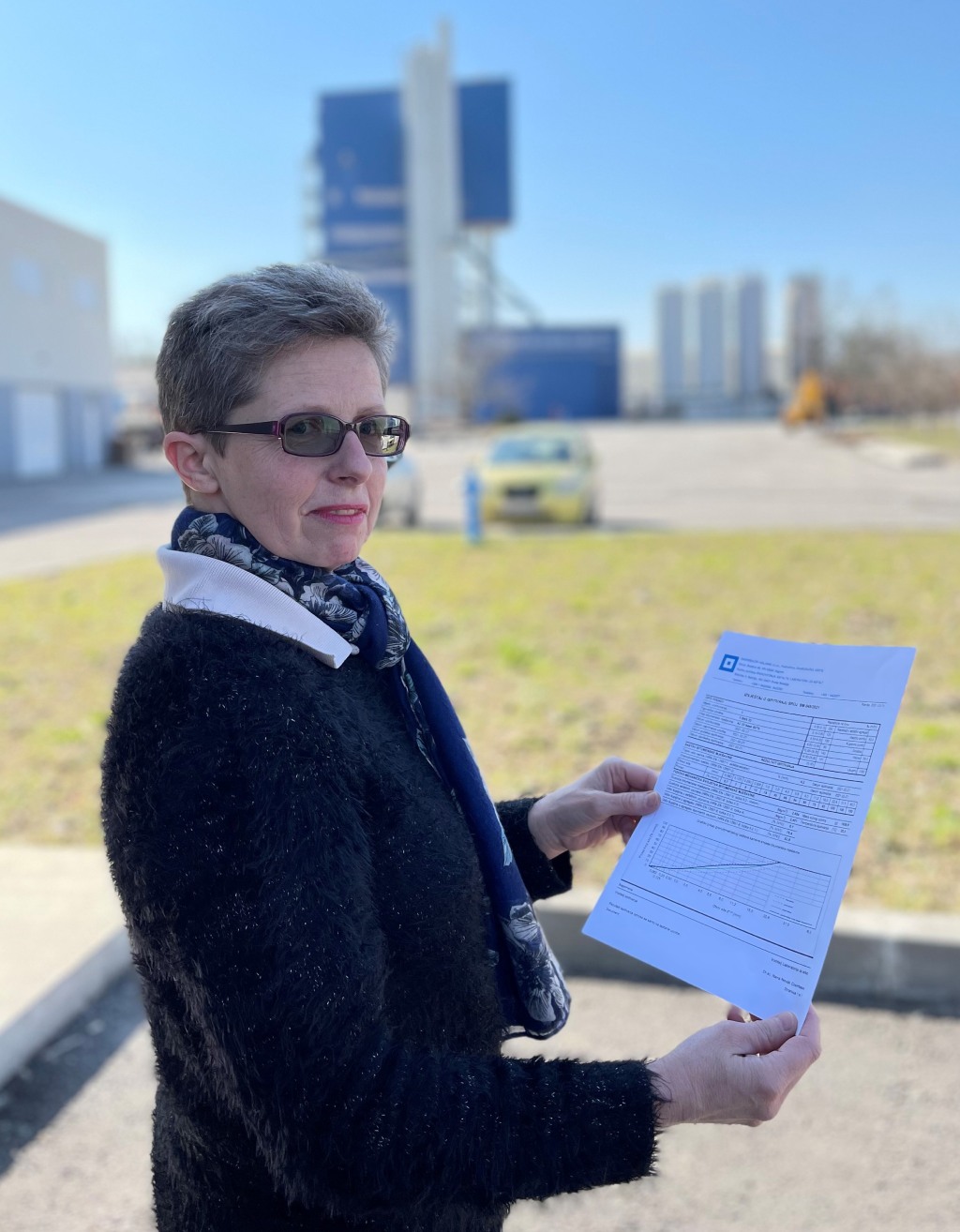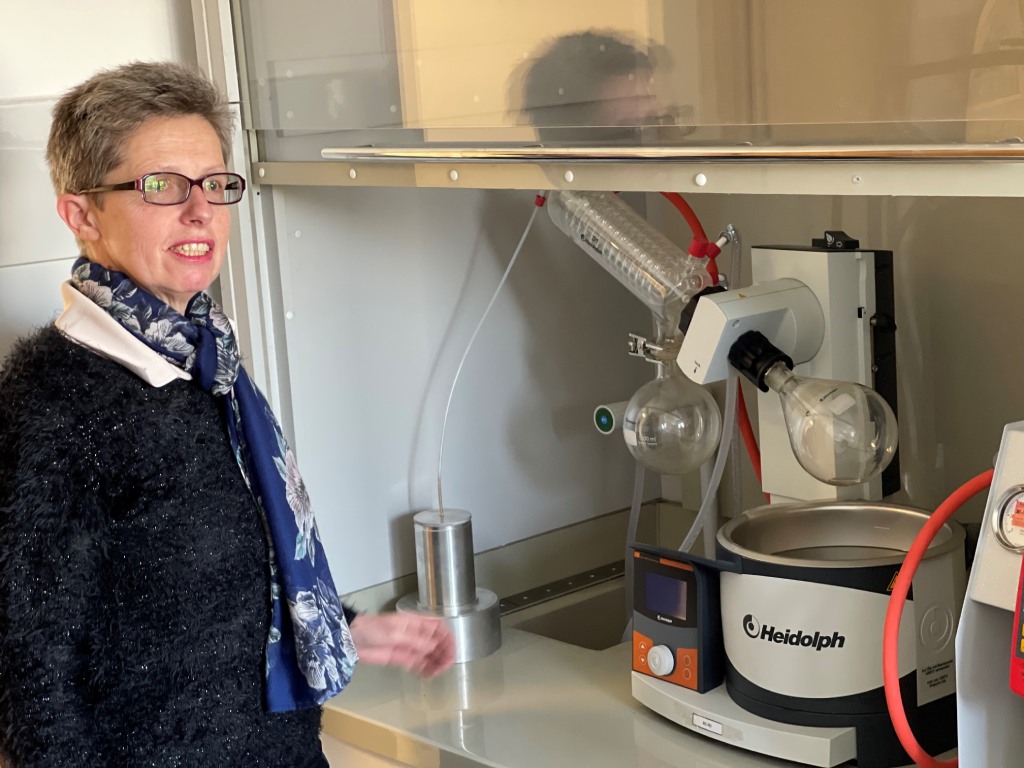The quality of zagreb's asphalt is in the safe hands of a doctor of science
(Published on March 8, 2021)
Nana Novak Coumbassa, Head of the Asphalt Laboratory, is a Doctor of Science who replaced her career as a senior assistant and research novice at the Ruđer Bošković Institute in 2005 with a position as a technologist in the laboratory of the Zagreb Roads asphalt base.
For the layman, the production of asphalt does not look like a special art. In everyday life we don't think about that so much. But, as we noticed, in the laboratory of Zagreb Roads, the story of asphalt is anything but simple.Nana Novak Coumbassa, Head of the Asphalt Laboratory at the Asphalt Base in Rakitje, took us through the production process. She left a strong impression on us - modest, but firm and calm and uncompromising when it comes to the quality of work.
This native of Rijeka was brought to Zagreb by her love of chemistry, where in 1985 she enrolled at the Faculty of Science. Her first job, after graduating from college, was at the Ruđer Bošković Institute, where she completed her master's degree and doctorate. She left Ruđer Bošković Institute as a doctor of chemical sciences, senior assistant and research novice, and worked at the Faculty of Science for a short time. In June 2005, she was hired as a technologist in the laboratory of our Asphalt Base in Rakitje, leaving behind a scientific-research part of her life.
We ask her, why anyone would leave a world reputable institution like Ruđer Bošković and go into production.
- In order to be promoted into a higher title or re-election, it was necessary to meet certain conditions ditches every 5 years, which is not a problem. However, Ruđer's employees are guided by the Law on Higher Education and Scientific Research, and, in fact, one can never get a permanent job. Without a full-time job at the time, you couldn’t be creditworthy. Additionally, I was expected to go abroad for specialization and specialization after my doctorate. But by then I was already a mother. Priorities changed and eventually prevailed. And in Zagreb Roads, there was an opportunity for permanent employment, which I got after three years of work.

In 2005, everyone accepted her very well, although there were some prejudices at the beginning. Namely, at that time, about 140 people worked at the Asphalt Base, and Nana was only the fifth woman, and also a technologist in the laboratory. But, says Nana, it doesn’t matter. Very quickly they all rose above these prejudices and have been functioning together now for 16 years. Today at this address work about 30 employees, including 6 women.
She took over the management of the laboratory from his former boss in 2011, after his retirement.
- The part I run is officially called the Asphalt Laboratory, but in addition to control the quality of asphalt, ie to control the quality of work of two asphalt plants, we also control the quality of work of two crushers. One is there, in the area of the asphalt base, while the other is in the Working Unit Recycling of construction waste in Jakuševac. This crusher on Jakuševac is used for grinding of construction waste, which is later used to fill ditches, adjust the height of the road and the like. Here comes the milled mass - asphalt that could not be used anymore, needs to be removed and replaced with a new one. After that old asphalt is ground in the mill, part is used for installation in ditches or for new roads that we want it to be macadam, while part can be mixed back into new asphalt in a certain way and under certain conditions.
This is where Nana's laboratory has major part, which must design the product, ie determine in what way and under what conditions, with what raw materials and in what proportions that asphalt should be mixed in order to be of high quality. And quality asphalt is one that doesn’t crack in the winter and doesn’t mix in the summer. She notes that all tests are performed according to the standard HRN EN 13108 and emphasizes the importance of recycled asphalt base due to which the share of milled mass of old asphalt installed in new asphalt, from 10 to 15% (as it was on the old asphalt base), increased to 50% (the most commonly installed), thanks to two dryers as part of the new plant.
Laboratory modernization
In 2005, there were two different asphalt bases in the area of Zagreb Roads in Rakitje - one from the '90s, and the other from the '60s of the last century. The latter was demolished so that a recycling asphalt base could be built in its place in 2013. Along with the introduction of new technologies in the production of asphalt, the laboratory has also been modernized. A new floor of the building was also built, with new meeting room and offices. In coming years, new equipment need to be procured, which is now proposed by Nana, as the Head of the Laboratory. We are also inquiring about further plans, whether the laboratory will be certified.- Further development of the laboratory also depends on the development strategy of this activity. For now, we do not need that, because the asphalt base primarily produces asphalt for the needs of the city of Zagreb and the maintenance of unclassified roads, which is our primary activity. Laboratory certification should be in case we want to offer production control on the market. That would mean a lot of new investment, a lot of knowledge and investment, because all those permits costs.
At the end of the conversation, she says that gender is irrelevant in business, because we all have the same goal - to do the job in accordance with the standards and rules of the profession.
- As the Head of the Laboratory, I must know that all this information which came from my laboratory, are well, honestly and conscientiously done, because based on them, some decisions are made and can ultimately affect the quality of services our company provides for the city and citizens.
